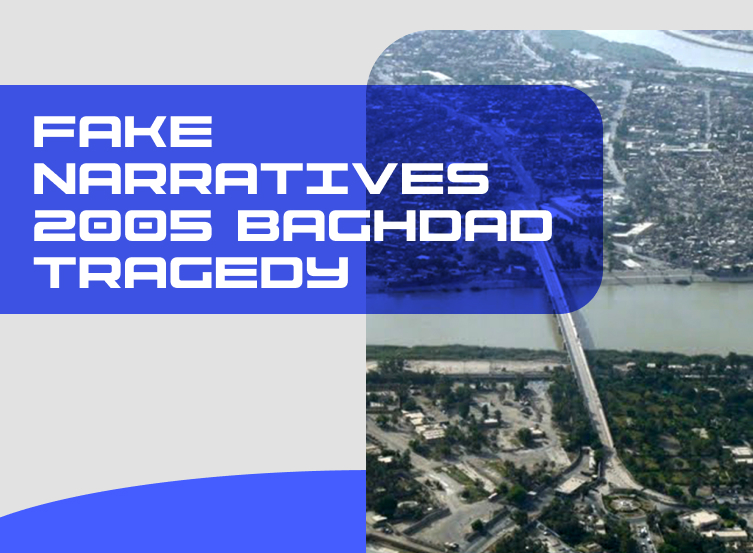Fake Narratives Surrounding the Baghdad Terrorist Attack of August 31, 2005

Editor’s Note: The author of this article was a direct witness to the tragedy and worked on the scene as a journalist.
On August 31, 2005, Baghdad witnessed one of the deadliest tragedies in modern Iraqi history. During a massive religious procession near the Al-Aimmah Bridge, a stampede triggered by rumors of a suicide bomber led to the deaths of nearly 1,000 people. While the catastrophe itself was well-documented, the surrounding cloud of misinformation, fake narratives, and political exploitation made the truth even harder to discern.
1. The Rumor That Sparked the Tragedy
The immediate cause of the stampede was a sudden panic among the crowd. Early reports claimed that an attacker with explosives had infiltrated the procession. Later investigations revealed no bomber was present at the site, yet the rumor spread rapidly, leading to chaos and death. This demonstrated how a single unverified claim can unleash devastating consequences.
2. Political Spin and Blame
In the days following the tragedy, different factions and political groups in Iraq and abroad used the event to push their agendas. Some framed it as an act of terrorism, while others insisted it was purely a logistical and security failure by the government. The lack of transparent information allowed fake news to thrive and deepen divisions.
3. Conspiracy Theories
Several conspiracy theories circulated, claiming foreign intelligence services, sectarian rivals, or even the Iraqi authorities themselves orchestrated the tragedy. None of these claims were ever substantiated, yet they spread widely, further eroding public trust.
4. Lessons Learned
The 2005 Baghdad tragedy illustrates the lethal power of misinformation in conflict zones. In highly tense environments, rumors can escalate into mass panic, and fake narratives can distort public memory of events. Combating misinformation requires timely, credible communication from authorities and responsible reporting by the media.
Conclusion:
The Al-Aimmah Bridge disaster was not only a humanitarian tragedy but also a case study in how fake news, rumors, and political manipulation can amplify suffering. Remembering this event is essential for understanding the role of misinformation in Iraq’s turbulent years and the urgent need for stronger fact-checking mechanisms.